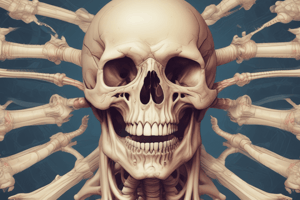Podcast
Questions and Answers
Which of the following is a key characteristic of classical conditioning?
Which of the following is a key characteristic of classical conditioning?
- The behavior is shaped over time through successive approximations
- The behavior is acquired through the observation of others
- The behavior is reinforced through rewards or punishments
- The behavior is learned through the association of two stimuli (correct)
What is the basic principle of operant conditioning?
What is the basic principle of operant conditioning?
- The consequence of a behavior can affect future behavior (correct)
- Behavior is learned through the association of two stimuli
- Behavior is shaped over time through successive approximations
- Behavior is acquired through the observation of others
Which of the following is a stage in observational learning?
Which of the following is a stage in observational learning?
- Acquisition of the behavior through the observation of others (correct)
- Acquisition of the behavior through rewards and punishments
- Acquisition of the behavior through classical conditioning
- Acquisition of the behavior through successive approximations
How many distinct stages of emotional development are described in the text?
How many distinct stages of emotional development are described in the text?
How many distinct stages of cognitive development are described in the text?
How many distinct stages of cognitive development are described in the text?
Which of the following is NOT a type of operant conditioning described in the text?
Which of the following is NOT a type of operant conditioning described in the text?
What is the relationship between classical conditioning and operant conditioning according to the text?
What is the relationship between classical conditioning and operant conditioning according to the text?
Which of the following best describes the role of consequences in operant conditioning?
Which of the following best describes the role of consequences in operant conditioning?
What are the two distinct stages of observational learning described in the text?
What are the two distinct stages of observational learning described in the text?
Which of the following is NOT one of the three distinct mechanisms of behavioral learning described in the text?
Which of the following is NOT one of the three distinct mechanisms of behavioral learning described in the text?
Flashcards are hidden until you start studying
Study Notes
Mandible Growth
- The body of the mandible grows longer by periosteal apposition of bone only on its posterior surface.
- The ramus grows higher by endochondral replacement at the condyle accompanied by surface modeling.
Facial Soft Tissue Growth
- Lip height is relatively short during the mixed dentition years.
- Lip incompetence is maximal during childhood and decreases during adolescence.
- Lip thickness reaches its maximum during adolescence, then decreases.
Growth of the Nose
- Growth of the nasal bone is complete at about age 10.
- Growth thereafter is only of the nasal cartilage and soft tissues, both of which undergo a considerable adolescent spurt.
- The nose and chin both become more prominent with adolescent and post-adolescent growth, while the lips do not.
Theories of Growth Control
- Three major theories:
- Bone is the primary determinant of its own growth.
- Cartilage is the primary determinant of skeletal growth, while bone responds secondarily and passively.
- The soft tissue matrix is the primary determinant of growth, and both bone and cartilage are secondary followers.
Level of Growth Control
- Site of growth: a location at which growth occurs.
- Center of growth: a location at which independent (genetically controlled) growth occurs.
- All centers of growth are also sites, but the reverse is not true.
Functional Matrix Theory of Growth
- Introduced by Melvin Moss.
- The theory holds that growth of the face occurs as a response to functional needs and neurotrophic influences and is mediated by the soft tissue in which the jaws are embedded.
- Growth of the cranium illustrates this view of skeletal growth very well.
Growth of the Cranium
- Growth of the cranial vault is a direct response to the growth of the brain.
- Pressure exerted by the growing brain separates the cranial bones at the sutures, and new bone passively fills in at these sites.
Mandibular Growth
- Growth of the mandible occurs by both endochondral proliferation at the condyle and apposition and resorption of bone at surfaces.
- The mandible is translated in space by the growth of muscles and other adjacent soft tissues, and addition of new bone at the condyle is in response to the soft tissue changes.
Social and Behavioral Development
- Learning and the development of behavior:
- Classical conditioning: operates by the simple process of association of one stimulus with another.
- Operant conditioning: can be viewed conceptually as a significant extension of classical conditioning.
- Observational learning: acquisition of behavior through imitation of the behavior of others.
Emotional and Cognitive Development
- Emotional Development: 8 stages.
- Cognitive Development: 4 stages.
Studying That Suits You
Use AI to generate personalized quizzes and flashcards to suit your learning preferences.



